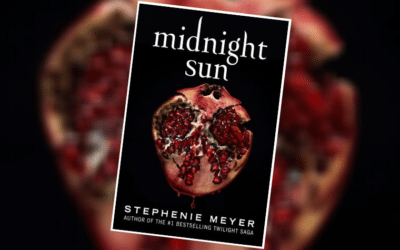***Trigger warning: this article mentions murder, sexual assault and cannibalism because Jeffrey Dahmer didn’t do us a favor and throw himself off a cliff.
Marc Meyers’ My Friend Dahmer is a 2017 adaptation of cartoonist John “Derf” Backderf’s 2012 graphic novel of the same name. The biographical drama follows serial killer, rapist and cannibal Jeffrey Dahmer’s teenage years, leading up to his first murder when at the age of 17, Dahmer killed Steven Hicks.
This is not a movie you want to watch while eating something. Or alone. Or at all (if this sort of thing scares you)?
STANDOUT LEAD
Ross Lynch (from Disney’s Austin & Ally) portrays the young killer with disturbing accuracy.

I cannot describe how deeply I wanted to burn this photo from my hard drive.
“It wasn’t so much getting into a young Dahmer’s head that was hard,’ Lynch told Newsweek, “but getting out of it at the end of the day.”
Compounding this struggle, they filmed in Dahmer’s childhood home. Because apparently no one on cast or crew has ever seen a horror movie and thought this was a good idea. (Alex Wolff, who plays Derf, swears there was a creepy incident after he yelled: “fuck Jeffrey Dahmer.”)
So now that I’ve set the scene – hell (actually they filmed in Ohio so close enough) – let’s get into it.
HOW DO YOU TELL THE STORY OF A SERIAL KILLER BEFORE THEY, WELL SERIAL KILL?
Backderf, and thus Meyer’s, wanted to avoid exploitation, something that’s pretty common among conversations concerning serial killers. There’s a weird… Marilyn Manson vibe that people often fix onto these murderers. They become edgy, misunderstood bad boys instead of the losers with zero-impulse control that they deserve to be remembered as.
If you’re like, oh no, no one does that! What are you talking about? I’d say, how about you go on fucking tumblr and get back to me.
As a hardcore Murderino I get the fascination with true crime and the people who commit it, but often fellow true crime enthusiasts cross this weird line where serial killers/rapists are transformed into these quirky pop culture icons. And while it rarely includes jokes directed at the victims – I 100-percent believe that’s not what people are intentionally doing – it’s impossible for me to separate this kitschy viewpoint on serial killers from the people they attacked and terrorized.

“Ladykiller” seems dark and cheeky and sooo clever. But then there’s that whole bit about how Ted Bundy was literally a ladykiller, murdering, raping and terrorizing over 30 women and it kinda seems like maybe don’t get that on a sticker to be #edgy.
My Friend Dahmer, while finding sympathy for pre-murderer Jeffrey, does not flirt with idolization.
We watch a masterful Lynch weave together moments from the killer’s past that give us naive hope that maybe the story will end differently. Logically I know that this is based on true events, that Jeffrey Dahmer will go on to murder and assault multiple boys and men. But as I watched MFD, I still caught myself thinking that if I catch the right moment – if the other characters catch it too – that maybe it’ll end better. This irrational behavior is a testament to the story, but also, disturbingly enough to Dahmer himself.
While he was dropping hints that an FBI agent would have picked up on, those around just him saw troublesome behavior, not major red flags. It’s the fear that permeates this film because, as viewers, we do know the ending. We have the power of hindsight to know that Jeffrey is more than a troubled kid. He’s not going to beat alcoholism and straighten out in his 20s. Understanding this mechanism is paramount to answering the questioned posed by My Friend Dahmer: could his crimes have been prevented or at least predicted?
Meyer’s has said that MFD is a warning to look for this kind of behavior. But I think the film answers it’s own question with a much more bleak conclusion.
Even when we notice the clues, we don’t understand the context.
And without that, we can’t prevent anything.
MIXED FEELINGS

Don’t talk to strangers. Don’t talk to acquaintances. Don’t make friends.
This film is very obviously filtered through Derf’s perspective, making him almost two characters: the physical teenager on screen and the storyteller, dictating what we learn about Dahmer. While this film accomplishes so much, it also makes it easy to forget that there’s more to Dahmer then what we’re seeing.
Juxtaposed against the many retellings of Dahmer’s life and crimes from unconnected writers, My Friend Dahmer lends itself to empathy. The killer had an upsetting childhood – that much is clear from the film and even more obvious from a Google search. We see accurate accounts of him struggling with his sexuality, bullying and trying to connect with his peers and for a lot of people, at least based on other My Friend Dahmer reviews, they find empathy for the young Dahmer.
It’s a unique focal point – that from the friend of a notorious killer’s as opposed to an unaffected party – but it also seems unnecessary and undeserved. We know how the story ends: Jeffrey Dahmer raped, murdered and dismembered 17 men and boys, many of which were gay men of color. To ask us to look at this person with empathy is hard. You don’t get empathy in retrospect.
Maybe it’s easier if you were his friend?
Maybe it’s easier if you want to try and make sense of his crimes?
Maybe we’re supposed to look at this as a warning?
My Friend Dahmer is, Meyers said, “… a cautionary tale of how someone falls through the cracks. How their friends, their neighbors, the community, their family misses the sign of a troubled teenager and how that then could have horrible effects later on in their life.”
If this is the point of My Friend Dahmer then Meyers missed the mark. His own film proves his point wrong. MFD didn’t depict people missing the signs of a troubled teen, it showed them misinterpreting or ignoring them. People did notice Jeffrey’s alcoholism, his slipping grades, and penchant for dead animals and yet no one truly acted upon any assumed concern. We don’t expect most troubled kids to turn into cannibalistic murderers (because most don’t) so treating every fucked up teenager like a sociopath isn’t going to prevent serial killers.
If school shootings have taught us anything, it’s that we aren’t great at catching disturbed young men before they strike despite the multitude of signs. My Friend Dahmer reminds that no one really “snaps.” And that’s rather terrifying – a concept that MFD employs throughout the film, most notably in a final scene between Derf and Dahmer.

And this is where you anxiety pee.
All of those missed signs come together and paint a clear picture of the danger that Jeffrey Dahmer poses to others.
In what, at times feels, like a bizarre, indie coming of age flick, I hope these moments serve to cut ties that could turn Teenage Dahmer into some sad, folk anti-hero because MFD, while foreshadowing his future terror, oddly enough makes it easy to forget who Dahmer is. You can get swept into this narrative of the ignored child.
So here’s a reminder:
In a 1993 Inside Edition interview, the reporter wanted to know what kept Dahmer from killing during the nine years of inactivity that followed his first murder, the slaying of Hicks. “There just wasn’t an opportunity to – to fully express what I wanted to do.” Jeffrey Dahmer replied. A sense of remorse didn’t keep him at bay. Lack of opportunity did.
In this interview he also talks about “saving body parts such as skulls” while casually sitting in a chair, one foot crossed over a thigh. Dahmer looks and sounds like your 90s dad discussing a carburetor. As he explains this desire that he couldn’t control – a desire he didn’t want, Dahmer makes a good case study for remorse and normality. It could have been anyone cursed with my problems. He manipulates.
OKAY BUT REALLY, COULD DAHMER HAVE BEEN STOPPED AS THE FILM QUESTIONS?
Fuck if I know. Psychologists couldn’t even agree on if Jeffrey Dahmer was a psychopath or not and his behavoir in the film leaves so many diagnoses options.
During the killer’s trial, the court appointed two mental health professionals to testify. Forensic psychiatrist George Palermo concluded that Dahmer had a mix of disorders including Antisocial Personality Disorder. (Psychopath is not a recognized diagnosis by the DSM-V. APD is the clinical term. Here’s some bureaucratic nonsense explaining why it’s not.)
The other guy, a psychologist name Samuel Friendman, referred to the serial killer as “Amiable, pleasant to be with, courteous, with a sense of humor, conventionally handsome, and charming in manner.” So everything that Ted Bundy was described as being as well.
Many testified that, instead, he had Borderline Personality Disorder and Schizotypal Personality Disorder, the first of which you can really see in My Friend Dahmer. A few major symptoms of BPD include an intense fear of abandonment and feelings of emptiness. Dahmer’s world revolved around this in MFD, particularly with regards to his parents.
Anne Heche (Joyce Dahmer) and Dallas Roberts (Lionel Dahmer) add this incredible anxiety to the film. As they neglect their sons, we have the added layer of Joyce’s untreated mental illness increasing the tension at home. The clues to Dahmer’s future become covered up by their messy marriage and Joyce’s health. Witnessing their inability to comprehend their son’s spiral is hard to do without yelling at the screen.

Hey have you noticed that our son is really into pickling dead animals? No? Okay guess I won’t worry about it.
Though not the most attentive parents, it’s not fair to blame them for Dahmer’s later behavior. He holds that responsibly alone. However, My Friend Dahmer paints a portrait that fits with a possible diagnosis of BPD.
Dahmer felt abandoned by his parents, he struggled to make friends and hated the idea of people leaving him. These feelings that we see in the movie are common among cannibals, which Dahmer eventually became.
Doctor Deborah Schurman-Kauflin wrote, “For someone who is isolated and resentful, it fills a void. Most cannibals are extreme loners. They do not have friends, and they are bitter about it. Killing and eating a victim ensures that the offender is never alone. He ‘has’ the victims with him at all times. They can never leave. This helps the cannibal retain a sense of control over his life.”
It’s like our friend Deborah was just asked to describe the Dahmer she saw in MFD.

Even when he’s shown with his group of friends in the movie, it’s clear that Dahmer was struggling to connect, to understand and blend in. Viewers watch Jeffrey seem to genuinely care about connecting to Derf and then later witness him wanting to attack the guy. You see Dahmer unaffected by his parent’s behavior then resentful of their neglect. He fluctuates between anxious and out of control to later being manipulative as he convinces a girl to be his prom date.
This back and forth between contradictory characteristics is one of the film’s great strengths.
MFD didn’t dumb down the complexity of Dahmer’s character, and that complexity is ultimately why psychologist haven’t reached an agreement on his diagnoses.
More concerning is that if Dahmer wasn’t just a psychopath, would it have made a difference? While Borderline Personality Disorder and Schizotypal Personality Disorder can both be treated, it would have taken an adult to get Dahmer to a doctor for a diagnosis. As depicted in the film, it was not something his parents were going to be around to catch and treat.
On the other hand, if Dahmer had Antisocial Personality Disorder, it would have presented even scarier implications. Psychopaths can’t be cured and once again someone – a teacher, a parent – would have had to push him into treatment.
Maybe it would have helped…
Or he would have just learned how to fake emotions and became more dangerous because that sometimes happens too.
Well, sleep tight and don’t make new friends.





